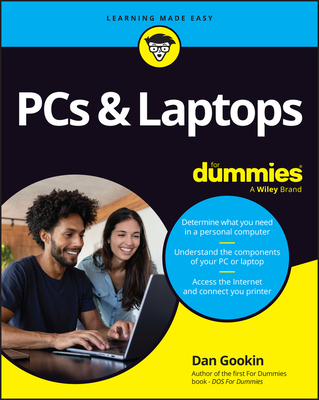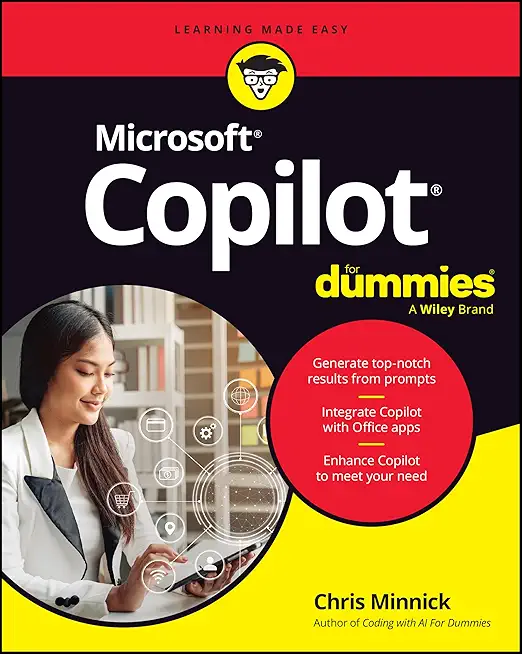10958: Programming Fundamentals of Web Applications Training in Chesapeake
|
We offer private customized training for groups of 3 or more attendees.
|
||
Course Description |
||
| This five-day instructor-led course provides the knowledge and skills to
develop web applications by using Microsoft Visual Studio and WebMatrix
2. The course introduces the Microsoft web stack and shows how to use
WebMatrix 2 to develop web applications. The course will help students
understand how start with basic web development concepts, and how to use
existing applications from the Application Gallery. The course will
describe basic web development, including CSS, plug-ins, scripting,
basic data access, and application hosting. The course will also
describe how to use Windows Azure for application hosting, and how to
move beyond WebMatrix 2 into Visual Studio.
Course Length: 5 Days
Course Tuition: $2190 (US) |
||
Prerequisites |
|
| Before attending this course, students must have: Knowledge of HTML or DHTML, including: Tables Images Forms Programming experience including the following concepts: Declaring variables Using loops Using conditional statements | |
Course Outline |
|
Module 1: Overview of Microsoft Web Technologies The goal of this module is to provide an overview of web technologies provided by Microsoft for creating and hosting web applications. These web technologies include IIS, Windows Azure, SQL Server, SQL Database, ASP.NET, WebMatrix 2, and Visual Studio. After completing this module, students will have a high-level understanding of each technology and how it fits into the overall web stack, but they may not be able to provide detailed information. Lessons
Lab : Creating a Website in Windows Azure
After completing this module, students will be able to:
Module 2: Exploring WebMatrix 2 The goal of this module is to encourage students to adopt modern best practices in the way they organize a web application project. For example, they should understand the importance of planning an application in full, before they write any code. In addition, this module describes the high-level features of WebMatrix 2. Lessons
Lab : Exploring WebMatrix 2
After completing this module, students will be able to:
Module 3: Building Simple Websites in WebMatrix 2 The goal of this module is to show the students how to begin creating a simple website in WebMatrix 2 and how to populate it with webpages that use the Razor view engine to render pages. Lessons
Lab : Building Simple Websites in WebMatrix 2
After completing this module, students will be able to:
Module 4: Building Data-Driven Websites in WebMatrix 2 The goal of this module is to introduce the students to the advantages of using a database to persist any data you may want to display on your website. The module introduces simple database concepts such as primary keys and data types. It also teaches how to add databases in WebMatrix 2 by using SQL Compact edition. Following this, the module shows how to add code to a Razor view to display the data that is stored in the SQL Compact database. Lessons
Lab : Building Data-Driven Websites in WebMatrix 2
After completing this module, students will be able to:
Module 5: Adding Rich Content to WebMatrix 2 Websites The goal of this module is to describe how to build a compelling website by including media content. The students will learn how to display audio, video, and images both by using HTML5 and by using earlier standards. In the lab, images will be retrieved from a database and videos will be retrieved from a website folder. Lessons
Lab : Adding Rich Content to WebMatrix 2 Websites
After completing this module, students will be able to:
Module 6: Designing the WebMatrix 2 Website The goal of this module is to describe how professional developers apply branding, graphic design, and a consistent layout to a website. This is essential to create a good impression for site visitors and to attract them back for return visits. The module also discusses the importance of a clear navigation structure that enables visitors to locate the page they need rapidly. Lessons
Lab : Designing the WebMatrix 2 Website
After completing this module, students will be able to:
Module 7: Deploying a WebMatrix 2 Web Applications The goal of this module is to describe how a website is hosted for customer-facing purposes. The module discusses IIS web servers running on client premises and at ISVs and in single and multi-server farms. Windows Azure is also covered as a website host. The location data is stored for a production site is also considered. In this context, SQL Server and SQL Database are discussed. The students are then told about WebMatrix 2 Remote tools, which can ensure synchronization between the development and production versions of a site. Lessons
Lab : Deploying a WebMatrix 2 Web Application
After completing this module, students will be able to:
Module 8: Troubleshooting WebMatrix 2 Websites The goal of this module is to equip students with techniques they can use for diagnosis and correction when exceptions and web error messages appear in their site. The tools covered include the developer tools in Internet Explorer and the Error List and Request tools in WebMatrix 2. Students also see how to configure their site to display a custom error page to site visitors, with a friendly, branded message. Lessons
Lab : Troubleshooting WebMatrix 2 Websites
After completing this module, students will be able to:
Module 9: Consuming Services and Data from the Web The goal of this module is to describe the many services available on the web that provide data in different formats, which may be of use to your web application. This module focuses on writing code that calls such services, and not on reusing open source components that call such services. Students will see example web services, data sets from the Windows Azure Marketplace, and oData feeds. They will learn how to reuse such data and assemble it into mash-ups. Lessons
Lab : Consuming Data and Services from the Web
After completing this module, students will be able to:
Module 10: Enriching a WebMatrix 2 Website by Using Open Source Components The goal of this module is to show the students that many highly functional open source packages are available within WebMatrix 2 through the NuGet tool. Developers can add, adapt, and use these packages in their application to implement advanced functionality without coding it from scratch. This approach can hugely accelerate the development of a web project. Lessons
Lab : Enriching a WebMatrix 2 Website by Using Open Source Components
After completing this module, students will be able to:
Module 11: Securing a WebMatrix 2 Website The goal of this module is to ensure that students fully understand common techniques an attacker might use to break a website and how to protect sites against such attacks. The module also describes how websites can authenticate a user to determine if they should receive a higher level of access to content. Students will learn how to enable users to manage their own passwords and how to create multiple user roles. Lessons
Lab : Securing a WebMatrix 2 Website
After completing this module, students will be able to:
Module 12: Building Responsive WebpagesThe goal of this module is to introduce the students to coding techniques that execute JavaScript code on the browser. Students will see that client-side code can execute without a full page refresh and so can respond much more quickly to user actions. This results in more compelling web pages. The module discusses about how to use AJAX Helpers to build partial page updates and introduces the jQuery library and its common uses. Finally, the module describes how developers can configure ASP.NET Caches to optimize the performance of their site. Lessons
Lab : Building Responsive Pages
After completing this module, students will be able to:
Module 13: Driving Traffic to a WebMatrix 2 Website The goal of this module is to equip the students with techniques to increase the number of visitors who access a published site. The module begins by discussing how to analyze and understand who visits your site, when they visit, and what pages interest them. The behavior of search engine web bots is discussed and students learn how to ensure that their site is fully crawled and close to the top of search engine results. Finally, locations at which you can advertise your sites are discussed. Lessons
Lab : Driving Traffic to a WebMatrix 2 Website
After completing this module, students will be able to: analyze the user traffic visiting a public website and optimize the site to appear close to the top of search engine results. Module 14: Customizing an Application from the WebMatrix 2 Gallery The goal of this module is to show students that they need not rule out an application from the WebMatrix 2 gallery because it does not satisfy all the requirements a customer specifies. Instead, a developer can use an application as a starting point that meets a majority of customer requirements. Any gaps can be filled by adding extra pages and other custom features to the application. Lessons
Lab : Customizing an Application from the WebMatrix 2 Gallery
After completing this module, students will be able to:
Module 15: Transitioning from WebMatrix 2 to Visual Studio The goal of this module is to describe to the students why professional developers use Visual Studio as their principal Integrated Development Environment (IDE). Students will see the advanced features of the ASP.NET Web Forms programming model, which requires Visual Studio, and also see some details of ASP.NET MVC. Students also see the advanced debugging tools Visual Studio includes and understand how these accelerate code development, testing and troubleshooting. They will see how to add Web Forms pages into existing ASP.NET applications. Lessons
Lab : Transitioning from WebMatrix 2 to Visual Studio
After completing this module, students will be able to:
|
Course Directory [training on all levels]
- .NET Classes
- Agile/Scrum Classes
- AI Classes
- Ajax Classes
- Android and iPhone Programming Classes
- Blaze Advisor Classes
- C Programming Classes
- C# Programming Classes
- C++ Programming Classes
- Cisco Classes
- Cloud Classes
- CompTIA Classes
- Crystal Reports Classes
- Design Patterns Classes
- DevOps Classes
- Foundations of Web Design & Web Authoring Classes
- Git, Jira, Wicket, Gradle, Tableau Classes
- IBM Classes
- Java Programming Classes
- JBoss Administration Classes
- JUnit, TDD, CPTC, Web Penetration Classes
- Linux Unix Classes
- Machine Learning Classes
- Microsoft Classes
- Microsoft Development Classes
- Microsoft SQL Server Classes
- Microsoft Team Foundation Server Classes
- Microsoft Windows Server Classes
- Oracle, MySQL, Cassandra, Hadoop Database Classes
- Perl Programming Classes
- Python Programming Classes
- Ruby Programming Classes
- Security Classes
- SharePoint Classes
- SOA Classes
- Tcl, Awk, Bash, Shell Classes
- UML Classes
- VMWare Classes
- Web Development Classes
- Web Services Classes
- Weblogic Administration Classes
- XML Classes
- RED HAT ENTERPRISE LINUX SYSTEMS ADMIN II
8 December, 2025 - 11 December, 2025 - RED HAT ENTERPRISE LINUX SYSTEMS ADMIN I
3 November, 2025 - 7 November, 2025 - VMware vSphere 8.0 Skill Up
27 October, 2025 - 31 October, 2025 - Introduction to Spring 6, Spring Boot 3, and Spring REST
15 December, 2025 - 19 December, 2025 - ASP.NET Core MVC (VS2022)
24 November, 2025 - 25 November, 2025 - See our complete public course listing






